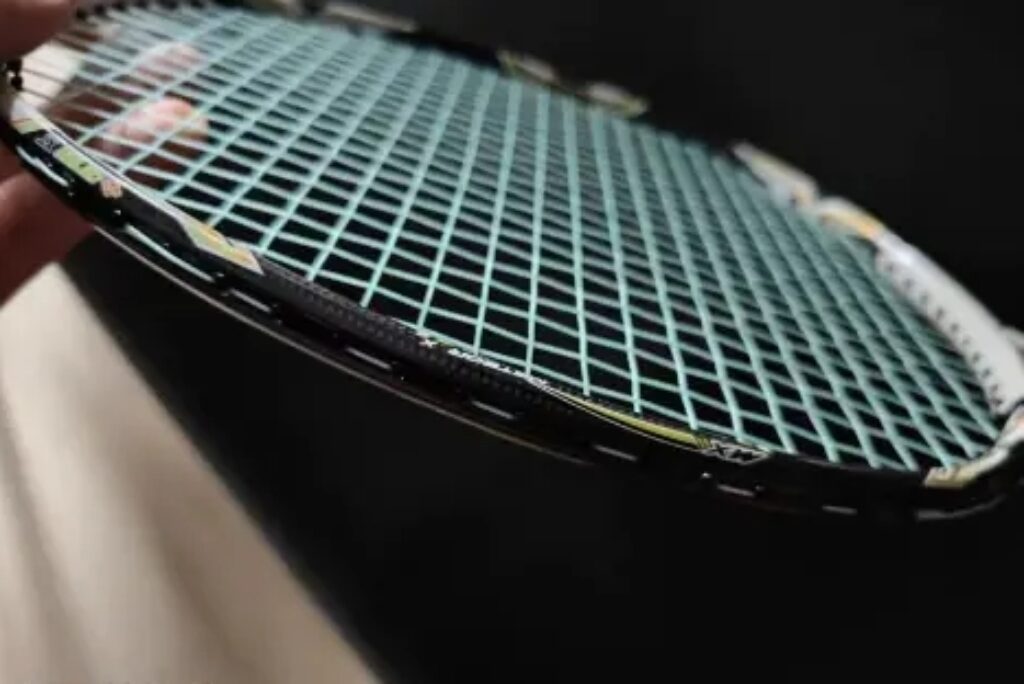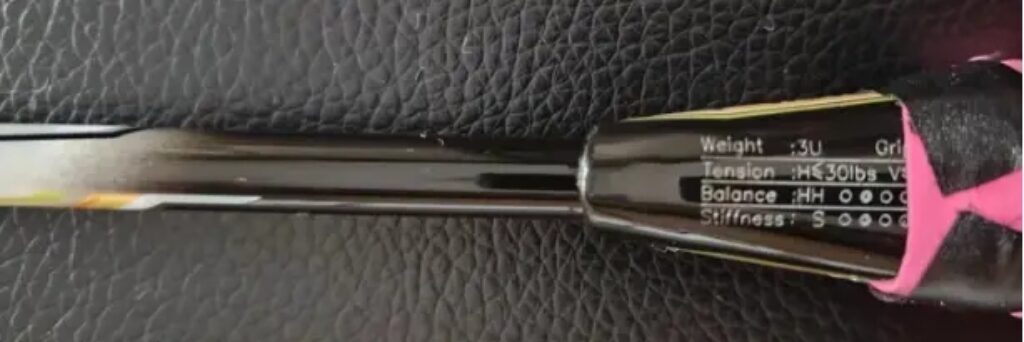In 2014, the MX-90, as the successor to the MX-80, should have become the ultimate masterpiece. However, the MX-90’s popularity and recognition are vastly different from the MX-80’s, and even it couldn’t escape the fate of being overshadowed by the MX-80 like other high-end models in the MX series. However, unlike the other high-end models outside the MX80/90, the MX-90 still has a certain audience, and some of the older MX series players tend to prefer the MX-90.
As the highest-numbered model in this classic series, it may be a more balanced option.

Specifications:
Weight: 3U G5, no grip, total weight when in use: 89.7g, balance point: 295mm, 7.0mm shaft, shaft length: 215mm, stiffness: high.
Frame: octagonal aerodynamic frame, 80-hole string bed, grooves at 9-3 points.
String tension: 28 lbs recommended, strung at 25-27 lbs with KT66F.
Does anyone else, like me, look at some of the top products from the previous era and analyze their appearance, only to find that they lack some of the exquisite stickers, colors, and patterns compared to the new models? But they have a particular sense of power, and the MX-90 is no exception. Setting aside the imperfections due to age, the frame and shaft of the MX-90 have a thickness that exudes strength, providing a great sense of security. The color scheme uses a white base on the T-joint and head, with black or clear lacquer on the frame wings and cone, giving it a regal feel.

Looking through some data, the MX-90’s marked stiffness is indeed slightly lower than the MX-80N, but the head-heavy feel is more pronounced. Back then, this series was known for its solid feel, which I initially thought was due to the thick shaft. Then, I thought it was the inherent property of the 80-hole string bed. Later, I discovered a new clue—enhanced woven carbon fiber. This technology, which later became the reinforced multi-layer structure (FRS), was subsequently applied to some of Victor’s mid- to low-end models, greatly improving their high-tension durability. However, it also made those models’ faces feel more rigid, and to my surprise, this was the origin.
It’s worth noting that the MX-80’s shaft is 7.2mm, while the MX-90’s is 7.0mm.

The differences in frame shape and weight distribution result in a significantly different feel between the MX-90 and MX-80. First, the aerodynamic treatment on the MX-90 is not as sharp, and the frame thickness has increased, which reduces its swing speed compared to the MX-80. Secondly, the head-heavy setup makes the racket feel more solid and substantial. This brings about changes in the string bed performance, with the MX-90 having a stronger hold on the shuttle, making it more user-friendly for players who aren’t yet proficient in power generation. Additionally, the higher swing weight makes hitting long clears during warm-up smoother, as you can send the shuttle flying with ease, though this may negatively affect stamina during intense matches.
The shaft performance of the MX-90 also differs from that of the MX-80. With a thinner diameter, the shaft is more elastic, reducing the stiffness feedback and adding a bit of shaft recovery elasticity to the shots. The MX-90’s control ability has thus improved, with the added hold time providing more maneuverability during shots. Moreover, the head-heavy feel, similar to the MX-70, gave me confidence in the racket’s stability.

The feel in drives and blocks hasn’t weakened, as the MX-90 still offers excellent shot responsiveness and precise direction. However, the higher swing weight places greater demands on the user’s forearm and finger strength endurance. After a high-intensity doubles match, I noticed a bit of soreness in my forearm.
Judging from its feedback, I was very eager to test its attacking performance, and it didn’t disappoint. The actual effect needs no elaboration—its high potential was once affirmed by players like Gideon and Chou Tien-Chen. During powerful smashes, the racket provides an immensely satisfying experience for players with good power. In this area, the differences between the MX-80 and MX-90 become clearer. The MX-90, with its higher swing weight, offers a more intense downward pressure while reducing the difficulty of generating power, but its higher swing weight also makes follow-up shots less fluid compared to the domineering MX-80N.

Ultimately, Victor’s “X” represents a balanced design. From the earliest SupernanoX, to MeteorX, to HypernanoX, and now to ThrusterX, and even among all the X-suffix products in the series, they have intentionally pulled some of the more aggressive rackets toward the middle of the spectrum. The same applies to the MX-90. Compared to the MX-80, after this adjustment, it feels slightly more like an attacking racket.
I originally wanted to say that if I couldn’t get a good deal on the JJS, then the MX series would end here for me. But after reconsidering, I realized the MX80B is quite quirky as well, so let’s hold off on that for now.

Leave a Reply